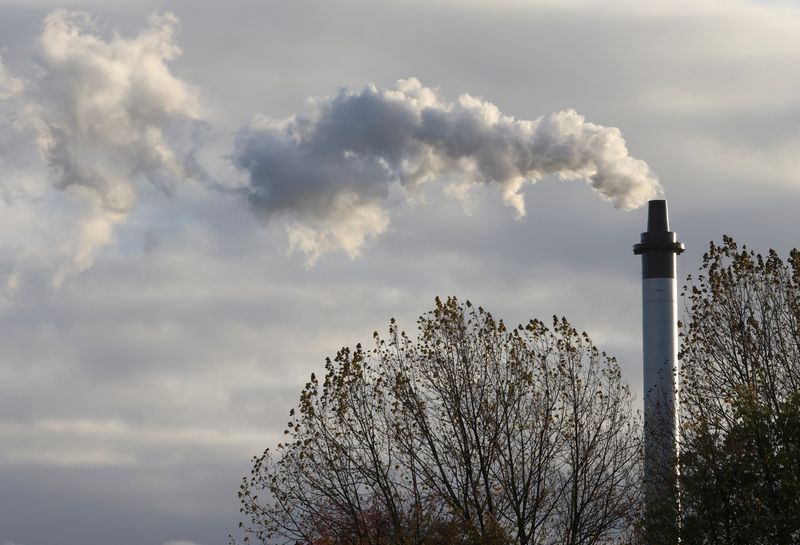UK manufacturing PMI shows falling output, weak foreign demand
2022.10.03 05:59
[ad_1]

© Reuters. FILE PHOTO: A smoke billowing from a chimney is pictured, as the UN Climate Change Conference (COP26) takes place, in Glasgow, Scotland, Britain, November 6, 2021. REUTERS/Yves Herman
LONDON (Reuters) – British manufacturing output fell for a third month in a row in September and orders declined for a fourth consecutive month, hurt by falling foreign demand, according to a closely watched survey released on Monday.
The S&P Global (NYSE:) manufacturing Purchasing Managers’ Index (PMI) rose to 48.4 from August’s 27-month low of 47.3 but remained below the 50-level that separates growth from contraction and was a fraction weaker than the initial ‘flash’ estimate of 48.5.
“September saw new export business contract at the quickest pace since May 2020, with reports of lower demand from the U.S., the EU and China,” S&P Global said.
“Manufacturers faced weak global market conditions, rising uncertainty, high transportation costs reducing competitiveness and longer lead times leading to cancelled orders,” it added.
The most recent official data showed manufacturing output grew by 1.1% in the year to July.
Britain’s economy is on the cusp of recession as households and businesses wrestle with rising energy costs, a jump in borrowing costs and a volatile currency which struck a record low against the U.S. dollar on Sept. 26.
While in theory a weak pound should boost demand for British exports, by making them cheaper for overseas buyers, past currency falls in 2008 and 2016 had little effect.
Sterling weakness does raise the cost of imports of fuel and raw materials – which are often priced in dollars – and the PMI showed that input cost inflation rose for the first time in five months, partly due to the weaker pound.
“A broad range of inputs were reported as up in price, including chemicals, electronics, foodstuffs, metals, packaging, plastics and timber,” S&P Global said.
The Bank of England’s chief economist, Huw Pill, has said a significant rise in interest rates is likely to be needed in November, in light of looser fiscal policy at a time when inflation is close to a 40-year high.
[ad_2]
Source link






